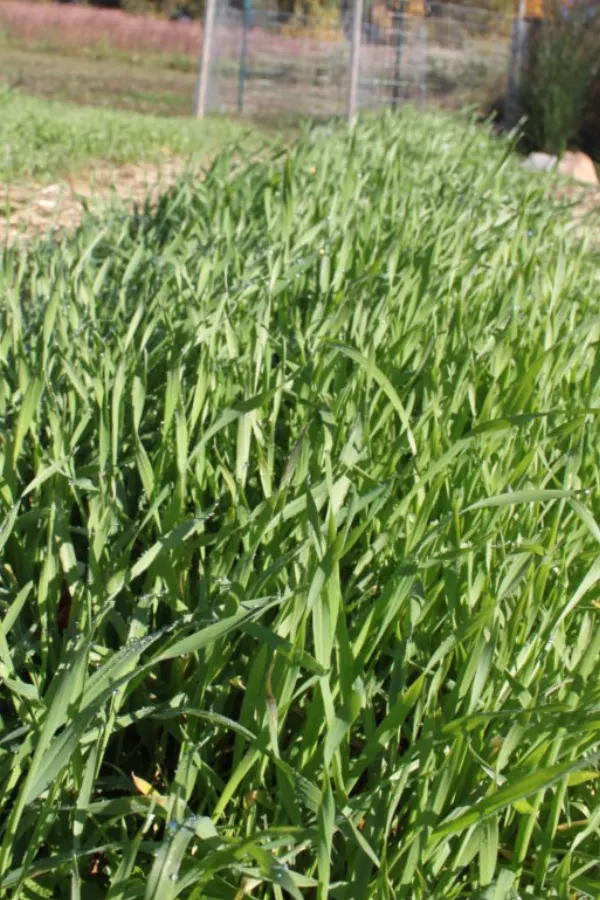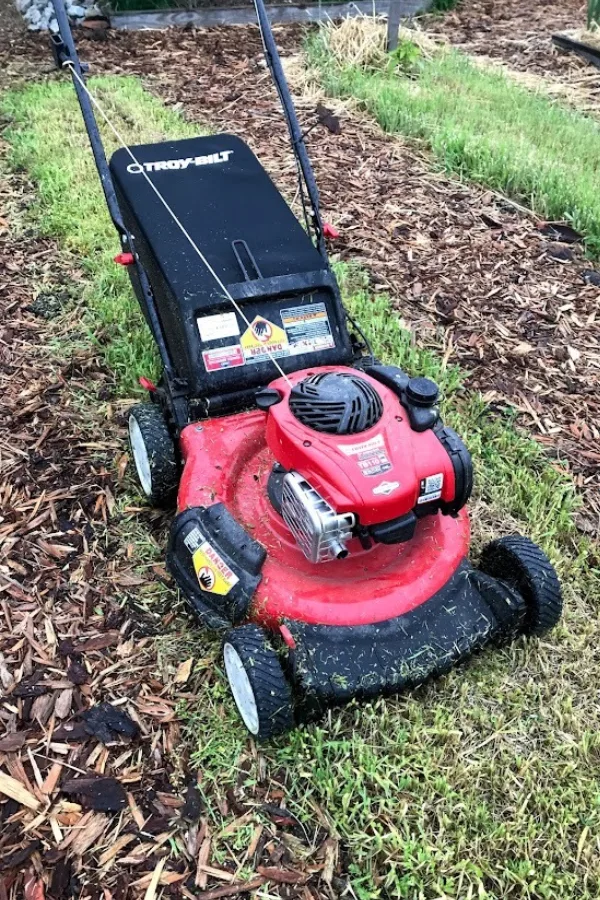If you are looking to grow more vegetables with less weeding, less watering and far less work – it’s time to create a no-till Raised Row garden – and grow easier and better than you ever imagined!
Quite simply, Raised Row gardening makes growing your own vegetables fun and easy. The simple, low-cost, low-maintenance method uses an entirely organic approach that can produce loads of vegetables. Best of all, it doesn’t require anything more than the most basic of tools to create and grow!
There is no need for a rototiller and endless hours of tilling and re-tilling. Nor will you have to spend your spring, summer and fall weeding, hoeing or performing many of the other tedious tasks often associated with tending to a backyard vegetable garden.

Why? Because creating and maintaining a No Till Raised Row Garden is all about simplicity. It allows you to maximize yields while minimizing daily, weekly and even annual work chores. And once you try it, you will never want to go back to traditional gardening again!
No Till Raised Row Gardening 101
One of the best attributes of a Raised Row garden is that it allows you to keep your garden productive, but also neat, tidy, and manageable. All without having to spend countless hours maintaining it. Best of all, there is never a need to use a rototiller to till and re-till your soil.
Sound impossible? Not only is it possible, it’s easy to do! Here is an in-depth look at how a Raised Row garden works from start to finish along with how to set up your own Raised Row Garden. In addition to the article, be sure to listen in to our podcast below on Raised Row gardening too. Both will have you more than ready to garden with ease this year!
Listen In To Our Simple Garden Life podcast on Raised Row Gardening!
How A No Till Raised Row Garden Works
Raised rows utilize the concept of raised beds, where growing is confined to a specific area. But instead of using rock, wood or metal to create “sides”, the soil in a Raised Row garden is simply tapered down on the edge of each row.
By using only soil for edges, you save valuable time and money when creating. But moreover, it makes it easy to maintain over time. Unfortunately, the soil in raised beds can often be difficult to work. Especially around the edges where hard sides made from solid wood, metal, plastic or even rock can get in the way of tools. But in a Raised Row garden, there is only tapered soil on the edges.
The growing space is the only space where you need to concentrate your time, effort and energy. Little to no effort is spent or will ever be spent on the walking rows in between. This allows you to conserve on valuable (and often expensive) resources such as water, compost and fertilizer. Resources that in a traditional garden are often wasted in areas where nothing will ever grow at all.
Saving Time & Energy With Raised Rows
In a “traditional” garden, the area between growing rows (walking rows) requires a lot of time and effort. First, you need to till all of the space. That alone can be difficult. Especially if the soil happens to be wet or muddy.

As the season progresses in a regular garden setting, the work continues. Either with more tilling to keep the walking rows clear, or hour upon hour of weeding. It is an endless cycle of work. And all to keep an area clear that can take up nearly three-quarters of a garden’s space – but where nothing ever grows!
In a Raised Row garden, the work load of that space is eliminated. The walking row areas are simply covered over with a heavy application of mulch. Mulch that eliminates weeds and weeding forever. No more tilling. No more weeds. And loads of time saved for you!
How To Create A No Till Raised Row Garden
If you have an existing garden, it is actually quite easy to convert it to a Raised Row garden using the existing soil. But don’t fret, even if you are starting a new garden where there is simply grass, it’s still a snap!
Creating The Growing Rows & Walking Rows
A Raised Row garden is made up entirely of two types of rows – growing rows and walking rows. We create our raised growing rows at 18″ wide, leaving 24″ inches between the edges of each row for our walking rows.

We leave 24 inches of space between each growing row to allow for walking and garden maintenance. You can leave more or less, but for us, 24 inches between rows seems to leave enough working room without wasting too much overall gardening space.
As for the length of the rows, it can be however long or short you wish depending on the space you have available. In our set-up, we make our rows 20′ long.
As you will learn in the next section, the walking rows will never need much attention at all other than a thick layer of mulch. That alone will save you hours of future garden chore work! Be sure to check out our Raised Row Garden book too – the 200+ page book covers Raised Row Gardening in-depth, and is filled with color photos, diagrams and all of the info you need to grow with ease!
Building The No-Till Raised Row Growing Rows
To build our first growing rows, we laid down a combination of straw, shredded leaves and compost about 4″ to 6″ high. You can use whatever organic materials you can find or have available for this layer. Some use only straw, or only leaves. A combination of all three is even better as it helps give a jump start to your garden soil.
Next, we added a 3″ to 4″ layer of topsoil on top, tapering it down to the edge of the rows. The finished rows eventually settle down to about 6″ in height in the middle, tapering down on each side to ground level.

If you happen to be starting from an existing garden space, create your rows with the straw / compost mix, and use the existing soil to place on top. If starting from scratch, you can till the soil, or bring soil in to lay on top.
Mulch Your Walking Zones
Once your growing rows are ready to go, it’s time for mulching the walking zones. For walking zones, we use a thick layer of inexpensive organic material to block weeds permanently. As noted above, this allows a large portion of the garden from ever having to be maintained.
We use hardwood bark chips for our rows. With that said, you can also use straw, leaves, or whatever is available locally and inexpensively. To provide extra weed control the first year, you can also put down cardboard or newspaper to help snuff out any existing weeds. Just make sure it is free of any harmful glues or inks.
Planting And Mulching Your Growing Rows
Planting time couldn’t be easier for a Raised Row garden. For transplant crops such as tomatoes, peppers, cabbage and more, we use a post hole digger to plant transplants in minutes. We dig our planting holes with one drop of the two blades, remove the soil, and plant away. It works through the cover crops in succeeding years as well.

For seed crops, we use a hoe or pick to create small seed furrows to plant our seeds. A pick works quickly and only disturbs a small area of the soil. This helps to keep future weed issues down, a big plus for seed crops.
After planting, we mulch around each of our plants with a bit of compost. A few inches around each plant helps to insulate the soil, and provide nutrients that leach down into the soil over time. We then cover the remaining space of each growing row with straw, shredded leaves or grass clippings.
An Alternative To Straw…
This past year, with the ever increasing cost of straw, we actually started to grow our own mulch. We now plant a separate patch of cereal rye or oats. We then mow and bag it regularly to use as our mulch withing the growing rows. See: How To Grow Inexpensive Garden Mulch – No More Costly Straw!
No matter what you use, the key is to keep the soil covered at all times so weeds can’t take over. By doing this, you reduce weeding chores to near zero. Not only that, the mulch insulates and feeds your plants slowly as it breaks down. It is a win-win all the way around!
The Garden In The Fall – Planting No Till Cover Crops
At the end of the first year, the no-till aspect of the Raised Row garden begins in earnest. In the fall, we plant our growing rows with a thick cover crop of annual (cereal) rye or oats. It quickly fills the rows with a lush, protective, dark green covering.

A cover crop recharges your garden soil as it grows and then breaks down the following spring. It also can help to fix nitrogen in the soil, and replenish valuable nutrients and minerals.
More importantly, the thick growth in late fall and early spring protects bare soil from weed seeds blowing in. It eliminates a large portion of any weeds that can ever find space to grow in the garden. It is amazing to see how with each passing year, there are less and less weeds to deal with.
But if that isn’t enough, the roots of the cover crop help break up and loosen the soil below the surface. The result is that subsequent crops find it easier to grow deep into the rich soil with each passing year.
Spring Arrives – Replanting The Garden
The absolute joy of Raised Row gardening really comes the following year and every spring thereafter. You will never need to use a tiller again, or use back-breaking muscles to turn over your soil.
To kill off the cereal rye or oats cover crop, all you do is begin to mow the crop in early spring. As you do, the crop begins to die off. Eventually, it will completely die off. By practicing this no till method, there is never a need to disturb the soil or replant thousands of weed seeds by tilling.

Even better, the cover crop clippings can stay in the growing rows to break down and add future nutrients as well. You can then use a post hole digger to easily create planting holes for transplants, or a pick to easily break up a small trench to plant early season seed crops.
The Power Of A No Till Raised Row Garden
With the no till cover crop method, the soil below gets better every season. It is never disturbed by a rototiller to hurt your soil structure below. Better yet, planting chores take only minutes, not hours!
To complete the process full circle, we mulch the growing rows again after planting. And it once again protects growing rows from weeds during the growing season. It is a low maintenance, weed-free gardening cycle that is pure joy to behold!
So what is holding you back this year? Make this the year you create your own low-maintenance vegetable garden! Happy Gardening – Jim and Mary.
Jim and Mary Competti have been writing gardening, DIY and recipe articles and books for over 15 years from their 46 acre Ohio farm. The two are frequent speakers on all things gardening and love to travel in their spare time.
As always, feel free to email us at thefarm@owgarden.com with comments, questions, or to simply say hello! You can sign up for our free email list in the subscribe now box in the middle of this article. Follow us on Facebook here : OWG Facebook. This article may contain affiliate links.
